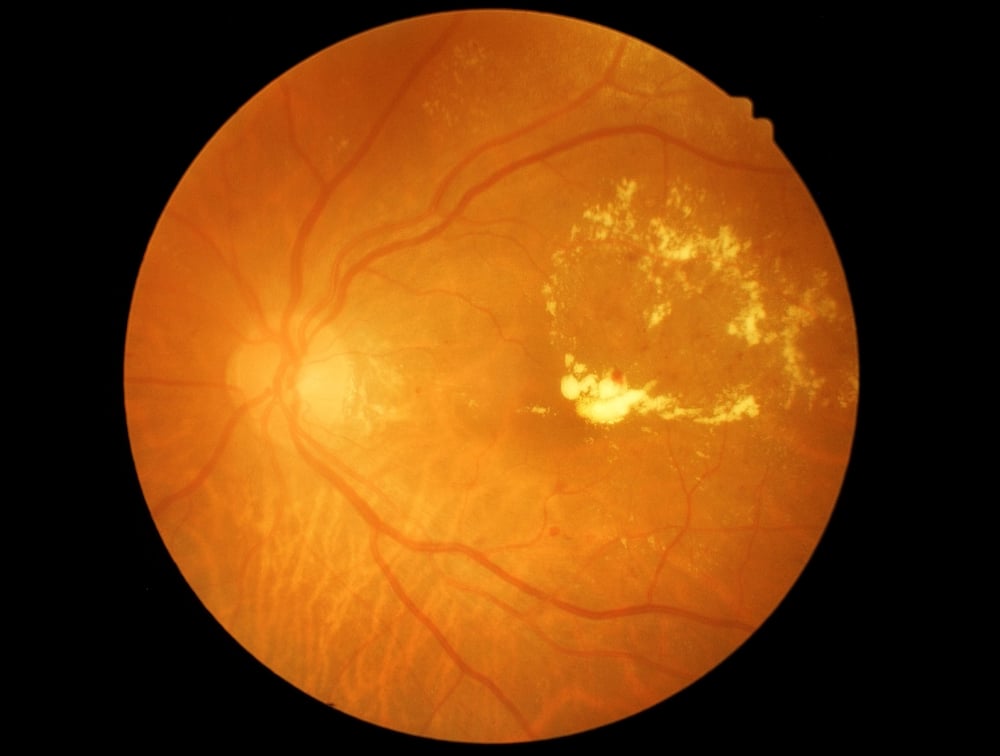Diabetes is a chronic condition that not only affects your body but can also affect your eyes. The less control you have over your blood glucose levels or the longer you have diabetes, the more likely you are to develop diabetic eye disease.
Diabetic eye disease is a potentially serious eye condition that can cause permanent vision loss. Keep reading to learn more about diabetic eye disease and how it can affect your eyes!
What is Diabetic Eye Disease?
Diabetic eye disease refers to various eye problems that can affect people with diabetes. These conditions include:
- Diabetic retinopathy
- Diabetic macular edema
- Cataracts
- Glaucoma
What is Diabetic Retinopathy?
Sometimes called diabetic eye disease, diabetic retinopathy is an eye condition that occurs when persistently high blood sugar levels or high blood glucose levels damage the tiny blood vessels in your retina.

The retina is the light-sensitive lining at the back of your eye.
It senses light entering your eye and converts it into electrical signals. The signals are then sent to your brain, which helps you see.
Damage to these blood vessels prevents your retina from detecting light and sending electrical signals to your brain, leading to vision loss. Diabetic retinopathy is a progressive disease that can cause permanent vision loss without treatment.
However, when detected early through frequent eye exams, your eye doctor can provide prompt treatment to slow the progression of diabetic retinopathy, delaying or preventing further vision loss.
What Are the Stages of Diabetic Eye Disease?
There are two types of diabetic retinopathy, and they can happen in four stages, with each stage building on the next. The two kinds are non-proliferative, which is the early stage of the disease, and proliferative, which is the most advanced form.
Stage 1: Mild Non-Proliferative

These bulges are known as micro aneurysms and develop due to high blood sugar. The bulges can block your blood vessels and cause them to leak small amounts of fluid into your retina.
At this stage, you likely won’t experience any vision problems or need treatment. However, if diabetic retinopathy is detected at this stage, your doctor will recommend keeping your blood sugar, cholesterol, and blood pressure under control to delay or stop the condition from worsening.
Additionally, you’ll be advised to get diabetic retinopathy screenings often to closely monitor your eye health.
Stage 2: Moderate Non-Proliferative
At this stage, the blood vessels in your retina swell further, interfering with blood flow to your retina. The swellings prevent your retina from receiving proper nourishment.
As a result, changes may happen in the retina. These changes can result in diabetic macular edema.
Diabetic macular edema happens when fluid and blood accumulate in your macula. Consequently, the macula, found at the center of your retina, can swell and cause vision problems such as blurry vision.
The macula is critical for sharp, straight-ahead vision and is also responsible for most of your color vision. At this stage, you may need eye tests every three to six months.
Stage 3: Severe Non-Proliferative
In this stage, more blood vessels in your retina are damaged and blocked. These blockages considerably reduce blood flow to your retina. Insufficient blood supply prompts a protein in your eye called VEGF to form new blood vessels in the retina.
If your blood vessels close off completely, it’s known as macular ischemia. Macular ischemia can cause blurred vision, dark spots or floaters, and patches of vision loss.
Once you’re in this stage, you’re more likely to lose your vision. Treatment may stop further vision loss.
However, if you’ve already lost some of your vision, there’s a high chance it won’t come back.
Stage 4: Proliferative Diabetic Retinopathy
Proliferative retinopathy is the most advanced stage. In this stage, new blood vessels form in your retina, a process called neovascularization. 
These vessels are fragile and can leak blood into your vitreous, which is the clear, gel-like liquid between your retina and lens. Bleeding into the vitreous is called vitreous hemorrhage and can cloud your vision.
Eventually, the bleeding can also result in scar tissue. As the scar tissue becomes smaller, it can cause your retina to tug away from the back of your eye, leading to retinal detachment.
Retinal detachment is a medical emergency and can quickly lead to total and irreversible vision loss. If the weak blood vessels affect the normal outflow of fluid, pressure can build up in your eye.
An increase in eye pressure can damage the optic nerve, causing glaucoma. The optic nerve carries visual information from your retina to your brain, allowing you to see.
Left untreated, proliferative diabetic retinopathy can cause severe vision loss and even blindness.
What Are the Symptoms of Diabetic Eye Disease?
There are usually no obvious symptoms in the early stages of diabetic retinopathy. So you may have the disease and not even know it.
Symptoms tend to appear in the most advanced stage of diabetic retinopathy when vision loss has already occurred. However, routine eye exams can help catch diabetic retinopathy in the earlier stages before you experience any symptoms.
Symptoms of proliferative retinopathy include:
- Blurred vision
- Distorted vision
- Poor night vision
- Decreased field of vision
- An increase in the number of floaters
- Colors appearing washed out or faded
- Dark or blank areas in your field of vision
- Vision loss
The symptoms of diabetic retinopathy typically affect both eyes.
Protect Your Sight from Diabetic Eye Disease
Frequent eye exams at Jacksonville Eye Center are your best defense against diabetic eye disease. The sooner diabetic eye disease is caught, the sooner treatment can begin to slow or stop vision loss.
Have you had your eye exams yet? Schedule an appointment at Jacksonville Eye Center in Jacksonville, FL, today if you haven’t. Diabetic eye disease doesn’t have to rob you of your sight.
